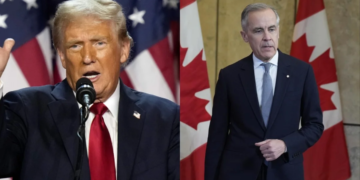A reciprocal tariff plan is a trade policy where a country imposes tariffs on imports that match the tariffs its trading partners apply to its exports. The goal is to promote fair trade by ensuring that tariff rates are balanced between nations. If one country imposes high tariffs on another’s goods, the affected country responds with equivalent tariffs to neutralize any trade disadvantages.
Example: U.S. and India Motorcycle Tariffs
A clear example of the reciprocal tariff plan can be seen in the motorcycle trade between the United States and India:
-
India’s Tariff on U.S. Motorcycles: India imposes a 70% tariff on motorcycles imported from the U.S.
-
U.S. Tariff on Indian Motorcycles: The U.S. imposes a 2.4% tariff on motorcycles imported from India.
Under a reciprocal tariff plan, the U.S. would raise its tariff on Indian motorcycles to match India’s 70% rate on U.S. motorcycles, aiming to establish a level playing field.
Calculation: Importing Motorcycles

To understand the financial impact of such tariffs, let’s consider a simplified example involving a U.S. company exporting motorcycles to India:
-
Cost to Manufacture One Motorcycle: $10,000
-
Export Price per Motorcycle: Assuming the company adds a 20% profit margin, the export price would be:
$10,000 (cost) + $2,000 (profit) = $12,000
-
India’s Tariff on Imported Motorcycles: 70% of the export price.
-
Tariff Amount: 70% of $12,000 = $8,400
-
Total Cost for Indian Importer: $12,000 (export price) + $8,400 (tariff) = $20,400
This means the Indian importer would pay $20,400 to purchase one U.S. motorcycle, significantly increasing the retail price for consumers in India.
Conversely, if the U.S. applies a reciprocal 70% tariff on Indian motorcycles priced at $5,000:
-
U.S. Tariff on Imported Motorcycles: 70% of $5,000 = $3,500
-
Total Cost for U.S. Importer: $5,000 (import price) + $3,500 (tariff) = $8,500
This would raise the cost of Indian motorcycles in the U.S. market, potentially reducing their competitiveness. This increase could lead to higher prices for consumers and potentially reduced sales for Indian motorcycle manufacturers in the U.S. market.
Implications of Reciprocal Tariff
Reciprocal tariff implementation functions as a trade policy to push businesses into lowering their import fees. Trade reciprocity can cause higher product costs for buyers and breed international trade problems between nations. The U.S. attempt to fix the trade imbalance by implementing matching tariffs creates higher prices and fewer choices in markets for both nations as well as their businesses and consumers.
Countries that bring on reciprocal trade restrictions usually face reactions through additional trade levies. This triggers a back-and-forth trade penalty initiative. Both countries and their industries experience negative effects due to this escalating trade measure that endangers import networks while creating business uncertainties for international traders. After the US declared new tariff rates multiple countries expressed readiness to activate countermeasures.
inserting reciprocal tariffs creates tension in diplomatic relationships among states. Alliances between nations tend to experience conflicts that create difficulties for trade negotiations and hinder their ability to work together on international matters. Several countries displayed different reactions to the United States’ new tariff policy. Some chose diplomatic routes yet others chose retaliatory countermeasures.
Reciprocal Tariff Sector-Specific Consequences
Some industries experience higher levels of negative impact from counter-tariff measures compared to others. Higher costs to produce automobiles combined with potential job losses become major issues for the automotive sector. The U.S. agricultural sector will encounter decreased export potential because trading partners initiate retaliatory tariffs against American farm products.















Discussion about this post